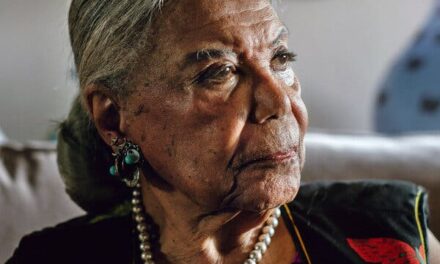
Key findings
The results of the present study showed the magnitude of FI levels in households headed by older people. A lower prevalence of FI in the older population (29.1%) can be observed when compared to FI estimates for the Brazilian population in general, based on data from the same population survey [4]. However, the values were similar to the FI of households headed by older people in the 2004 PNAD (29.8%), the only national survey that has evaluated FI in the older population [17].
There are still few studies dedicated to studying the levels of estimated FI in households with older people. In the early 2010s, moderate/severe FI ranged from 17.1% among households headed by older people in the 2004 PNAD survey to 6.6% in Campinas, a municipality in the state of São Paulo [17, 18]. For other age groups, the development and implementation of programs and public policies aimed at combating extreme poverty and hunger are justified [18, 19].
In relation to other countries, in recent years, there has been an increase in the percentage of FI and world hunger. Brazil, among Latin American and Caribbean countries, had a lower prevalence of moderate/severe FI. However, this does not eliminate the presence of hunger in households headed by older people in the country [20,21,22]. The FI scenario in older adults in Brazil is far worse when compared to households in the United States and Australia. There is evidence that FI in households headed by older people in Brazil may be almost 20 times higher than that in Australia [23, 24].
In Brazil, the EBIA has helped to measure FI in the population since 2004, indicating increasing trends in all forms of FI from 2018 onward [25]. As in the present study, national surveys that evaluated FI in the older population also used the EBIA as an instrument of analysis, which makes possible the plural understanding of particular aspects of how this age group behaves within society. The presence of FI measured by the EBIA is considered a social indicator, and in the national territory, it was used in other population surveys, allowing reliable estimates of the prevalence of the violation of the right to food and nutrition security, as well as its association with socioeconomic and demographic aspects in older populations [17, 26, 27].
Interpretation of results
The situation of moderate/severe FI in families with members and head of household ≥ 60 years of age is related to the heterogeneous distribution of income, access to education, sex and racial differences historically evidenced in Brazil. These findings tend to be consequences of the profound social inequalities and heterogeneity in aging that exists in Brazil [17, 28].
The socioeconomic and demographic relationship and FI in households headed by older people were similar to data from the adult population [17, 18]. However, it should be considered that the families of households headed by older people with moderate/severe FI, in addition to living with hunger, also face complications arising from the aging process itself, including prejudice, marginalization and social discrimination. Discriminatory attitudes toward older people directly affect their quality of life [28].
The factors associated with social inequalities and the FI situation in the older population are documented in the literature and have a generational effect on older individuals, accentuating the severity of the need to guarantee access to adequate food at home [3, 11, 26]. Among the evidenced inequalities, there was a higher prevalence of females (≥ 60 years of age) in a moderate/severe FI situation, indicating gender inequality. Authors have indicated greater availability of income in households headed by older men, one of the hypotheses being that these families have lower proportions of FI when compared to women [17, 29, 30]. The severe/moderate FI reveals itself in households headed by women as one of the consequences of sexism, even in socioeconomically favorable conditions, and is potentiated by the structural interaction of racism [31].
It is also noteworthy that there is a direct relationship between moderate/severe FI and ethnic-racial issues in Brazil. Historical, cultural, social and economic conditions have historically placed black and brown among the groups with the worst social and health indicators in the country. However, households with self-declared indigenous, black and brown older people had the highest prevalence of moderate/severe FI. Race/color in Brazil is a complex social construct and is highly related to health and food conditions, reflecting broader inequalities in the society [32, 33].
The level of education and FI have a consolidated relationship in the international literature, especially when analyzing the level of hunger,information, health and better job opportunities [3, 20, 34, 35]. Thus, it acts negatively on quality of life and healthy aging. Additionally, lower levels of education among older people may also indicate a greater need for them to continue working, even at older ages, to guarantee the necessary income for survival. Population studies have shown an association of inequality in access to health, especially among older people with less education who are residents of rural areas [17, 18, 36].
Regional inequalities are also associated with the FI situation, and the present findings reinforce hypotheses of the presence of high vulnerability in the northern part of the country [37, 38]. However, historically, the Southeast and South, which have low proportions of FI, are regions with more jobs, both in rural and urban areas, better living conditions and access to education, income, housing, health, food and income [38, 39].
In addition to evidence from other international and national surveys, this study found that the contribution of the older family members to household income was a protection mechanism [17, 33, 40]. It is understood that income has a direct relationship with the acquisition of food [18, 41]. Some studies point out that the financial stability of older people promotes security at home, placing the family in the context of food security [17, 18, 42]. In 2003, 75% of the family income was provided by individuals ≥ 60 years of age in households with one or more older persons, with most of the income of the older population coming from retirement and pensions [18]. This income can be considered a protective factor for the household due to the regularity of receipt of financial value; that is, a stable income is related to greater economic security, being inversely proportional to the presence of moderate/severe FI in families headed by older people [17, 40].
In this study, in households with severe forms of FI and whose income was complemented by receiving these benefits, the proportions were lower. Income transfer programs were considered important public policies for reducing poverty in Brazil. This result reinforces the importance of social policies aimed at guaranteeing the human right to adequate food as a way of guaranteeing access to food [43, 44]. The persistence of moderate/severe FI in the older population is associated with social disparities, and social support and the guarantee of programs and public policies aimed at meeting the needs of this population are fundamental [23, 25, 33].
Strengths and limitations
The present study has some limitations, as the survival bias tends to reduce the associations found between the variables. Even so, because it has a robust design, it was possible to analyze a representative sample of households headed by older people and apply a validity instrument to measure FI, following a national trend. The present study was consolidated in an analysis in 2018, where in Brazil, a political and economic crisis was potentiated and aggravated during the COVID-19 pandemic [22, 45, 46]. It is necessary to carry out cohort studies in the future, offering the possibility of temporal analysis and investigating possible variations over time.
Being carried out at a population level, the study had an innovative impact on the analysis of risk factors associated with moderate/severe FI in households headed by older people in Brazil, which had not occurred since 2004 in Brazilian population studies. In addition, the magnitude of the consequences for public health was evidenced in public policies aimed at combating hunger, which is fundamental to understanding how to protect the future development of food and nutritional security and promote active and healthy aging in the country.




